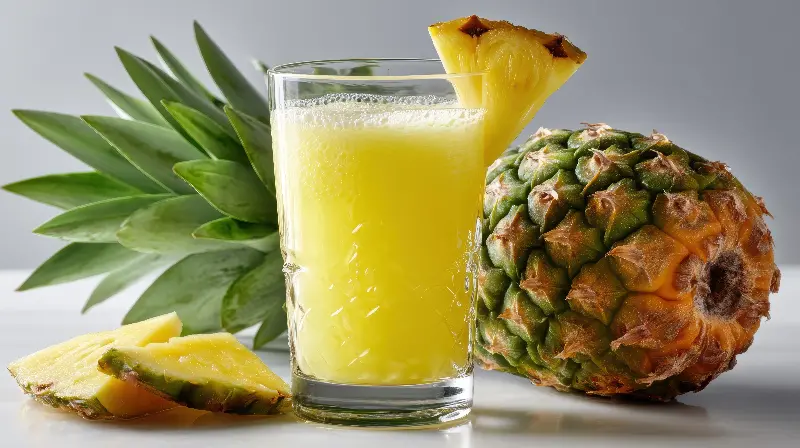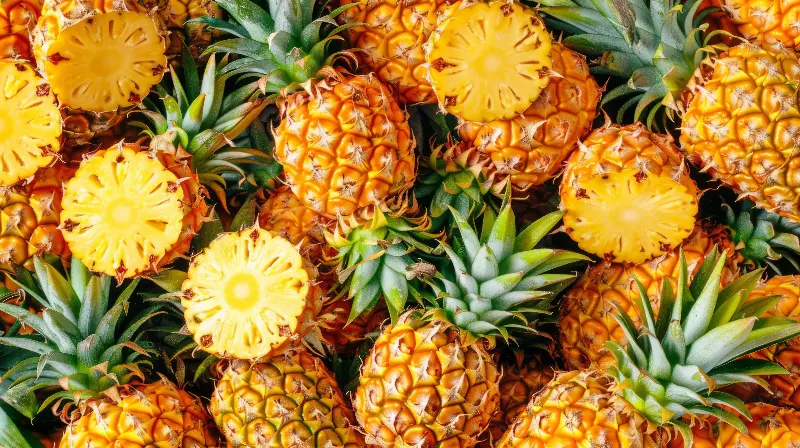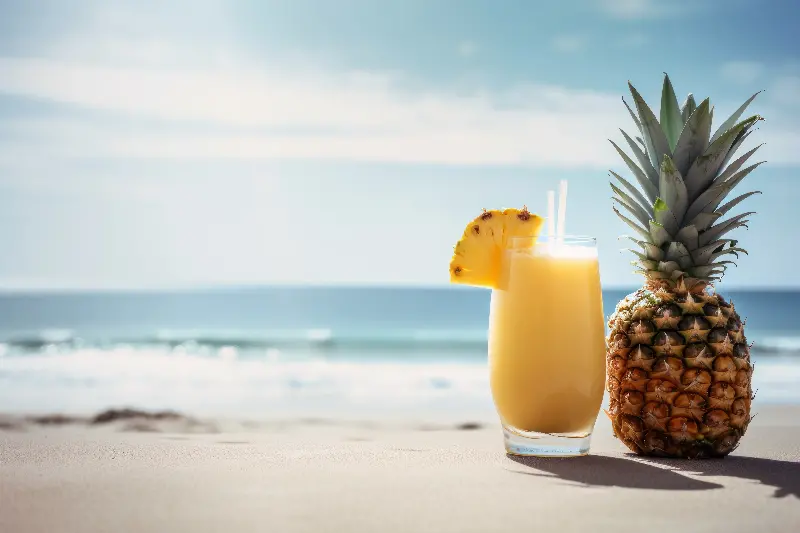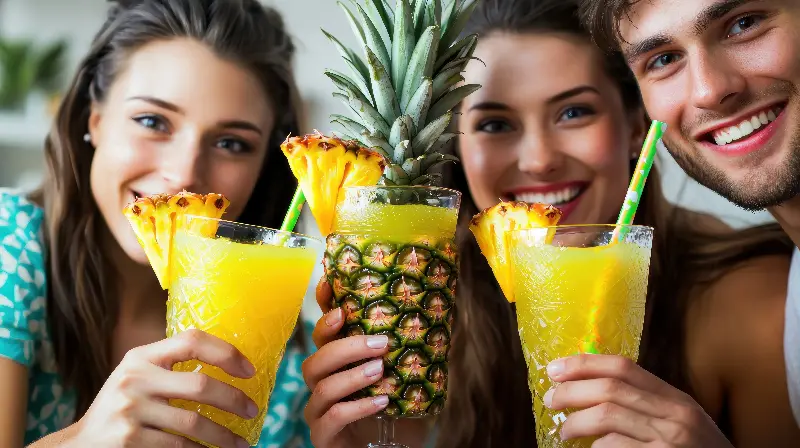Few refreshments evoke images of sun-drenched beaches and tropical luxury quite like a frosty glass of pineapple juice. This vibrant elixir, with its tangy sweetness and golden hue, has an intriguing history that stretches from centuries-old royal courts to today’s global cafés and juice bars. But the journey of pineapple juice is about more than taste; it is a story of adventure, symbolism, and shifting culinary trends around the world.

The Royal Favourite: A Symbol of Prestige and Hospitality
Long before pineapple juice became accessible to everyday people, the pineapple itself enjoyed almost mythical status in European society. Native to South America, the pineapple was first encountered by Christopher Columbus in 1493 on the island of Guadeloupe. By the early 16th century, this prickly fruit began making its way to royal courts across Europe, thanks to the networks established by explorers and colonisers.
In the chilly climate of Europe, growing a pineapple was an extraordinary challenge. Only the wealthiest households with vast hothouses could cultivate these exotic plants. As a result, pineapples were not simply fruit but the ultimate status symbol. Centrepieces at feasts, they often became ornaments rather than food, with some noble families even renting pineapples to display at their lavish parties, then returning the precious fruit uneaten.
Guests who did taste pineapple—especially in juice form—considered it an experience fit for kings. By the 18th century, the fruit and its juice conveyed messages of hospitality, luxury, and global sophistication. In England, the pineapple appeared on coat of arms, architecture, and tableware, signalling welcome and abundance.

The Tropics Embrace: Pineapple Juice Spreads Across the Globe
The true democratisation of pineapple juice began in the 19th and early 20th centuries, as the fruit was successfully transplanted throughout the tropics. Planters in Hawaii, the Philippines, the Caribbean, and parts of West Africa began cultivating pineapples on a large scale. Canneries quickly followed, allowing pineapple and its juice to be preserved, shipped, and eventually marketed to a worldwide audience.
Hawaii, with its ideal climate and enterprising entrepreneurs, soon became synonymous with canned pineapple. American industrialist James Dole was instrumental in transforming the island’s pineapple industry, earning Hawaii the moniker ‘Pineapple Island’. The development of canning technology meant that pineapple juice could be shipped across oceans and continents without the risk of spoilage, for the first time making it available to middle-class homes and restaurants far removed from tropical plantations.
Pineapple juice’s popularity boomed in the 1920s and ‘30s, ushered in by the rise of tiki culture and the allure of the ‘exotic’ in Western society. Bartenders and home entertainers alike eagerly adopted pineapple juice as a basis for punches, cocktails, and non-alcoholic sips—think piña coladas, mai tais, and fruit punches that remain household favourites today.

A Nutritional Powerhouse: Myths, Science, and Superfoods
As pineapple juice made its way from royal tables to supermarket aisles, its reputation as a health elixir grew. Folk wisdom in the tropics long held that pineapple was not just delicious, but beneficial—good for digestion, healing, and even infertility.
Modern nutritional science has confirmed some of these beliefs. Rich in vitamin C, manganese, and a unique digestive enzyme called bromelain, pineapple juice is now hailed as an anti-inflammatory drink that can aid recovery from exercise, soothe sore throats, and support immune health. Its high antioxidant levels contribute to the body’s defence against oxidative stress.
Interestingly, in recent years, social media trends have revived some more curious claims about pineapple juice. There has been speculation about its impact on everything from skin health to body odour’s pleasantness. While some claims are more folklore than fact, the drink’s unmistakable nutritional benefits are well documented, making it a staple in the world of wellness.
From Street Stalls to Global Cuisine: Pineapple Juice in Today’s World
No longer reserved for the elite, pineapple juice now features in cuisines and cultures all over the globe. Wander through the bustling markets of Manila and you’ll spot stalls serving fresh-squeezed pineapple juice, often with a hint of ginger or chilli. In the Caribbean, it stars in spicy marinades and as a counterpoint in jerk recipes. Brazil’s street vendors sell ice-cold ‘suco de abacaxi’ under the hot sun; in India, pineapple juice is blended into cooling summer sherbets.
In the West, pineapple juice’s exoticism remains a selling point—whether as a base for fine cocktails, a tangy smoothie ingredient, or a secret addition to festive holiday glazes. Chefs in upscale restaurants experiment with reductions and foams, while health enthusiasts prize its fruit-forward, non-alcoholic options. And as global travel and digital sharing foster a cross-pollination of culinary ideas, pineapple juice continues to inspire new drinks and dishes, blending tropical flair into everyday menus.

Consumer Trends: Why We Still Crave the Tropics in a Glass
Pineapple juice’s enduring appeal lies in more than its bright taste. It is both familiar and adventurous—a sip that recalls grand celebrations, childhood parties, and holidays by the sea. In a world where consumers seek authenticity, nostalgia, and health all in one, pineapple juice delivers. Its versatility fits with shifting trends in plant-based and non-alcoholic beverages, and its connection to distant cultures provides the sense of escape we often crave in our daily lives.
From royal courts to tiki bars, health gurus to home cooks, pineapple juice has proven that an ‘exotic elixir’ can bridge continents and centuries. So next time you raise a glass of this golden drink, you’re sipping on a story as rich and complex as its tropical flavour.
